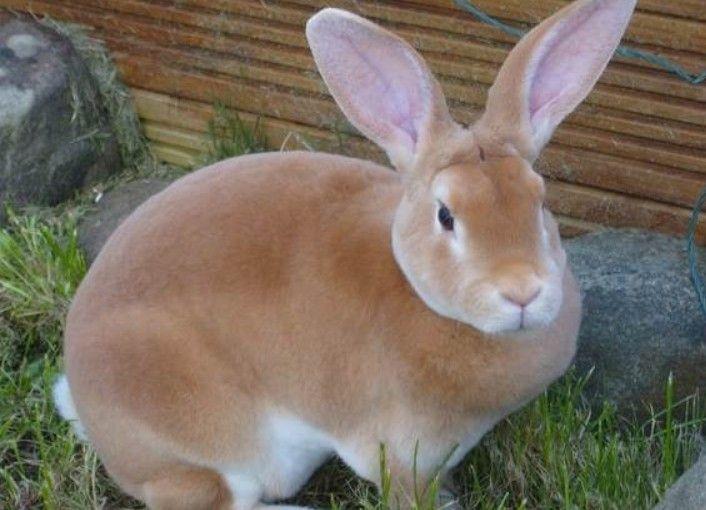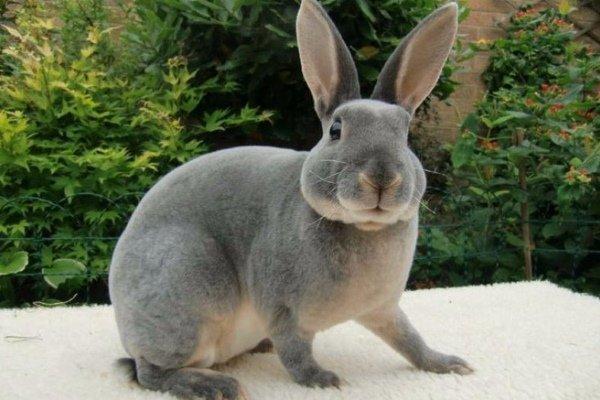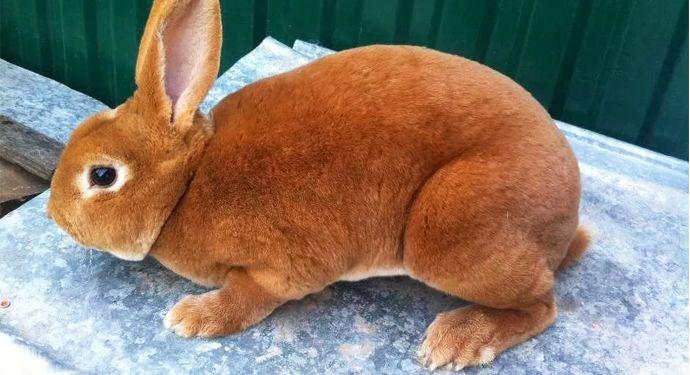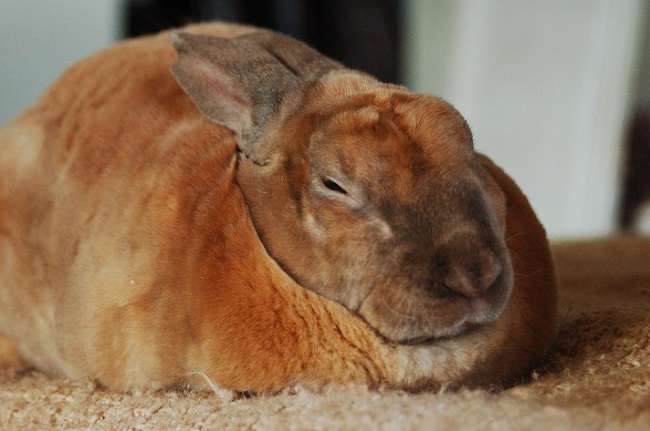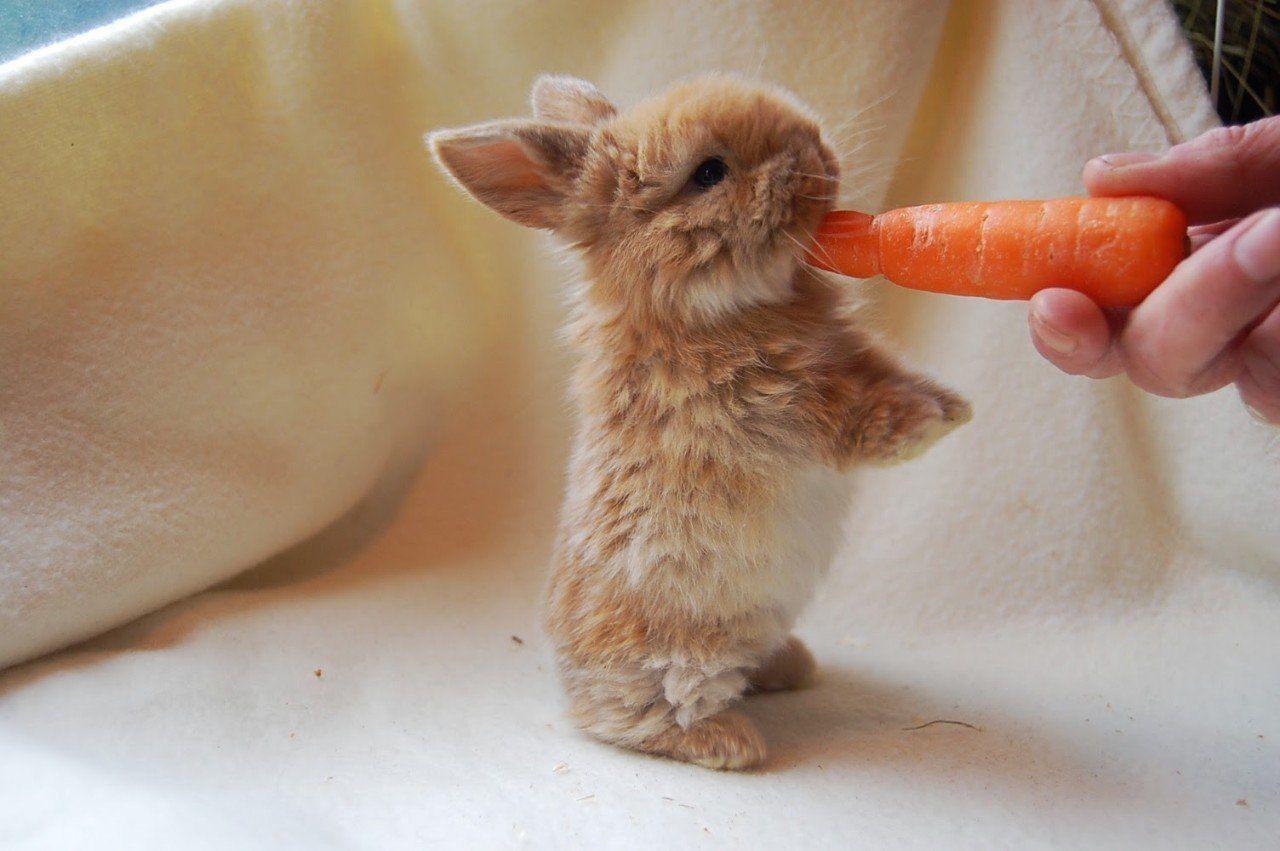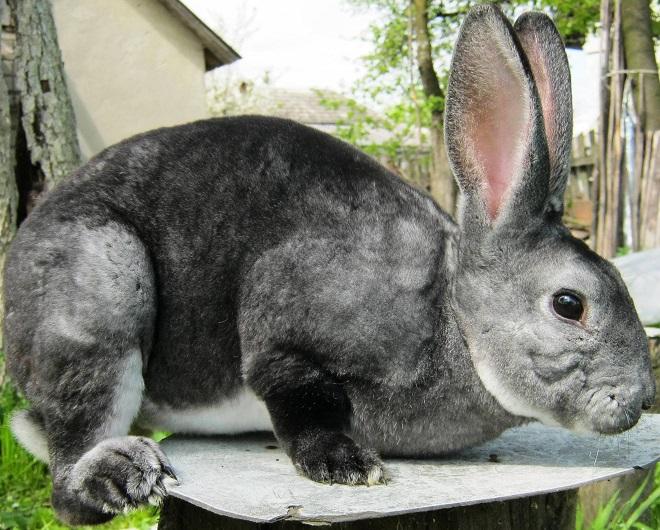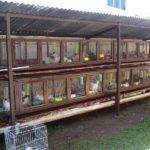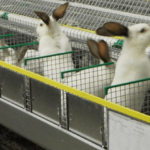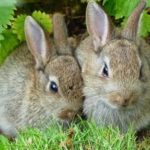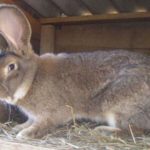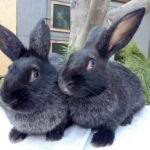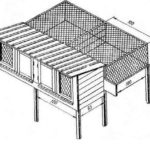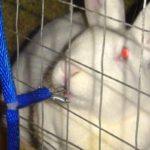Decorative rabbits have long been popular pets. A special advantage of Rex rabbits is their fur. The cover is so dense and elastic that it feels like velvet to the touch. In appearance, rabbits resemble plush toys, since the fur of animals is the same over the entire surface of the body. To prevent your pet from causing trouble, you need to provide it with the right conditions.
- History of the origin of the breed
- Description and characteristics of the Rex breed
- Appearance and standard
- Character
- Physiological features
- Rabbit fur
- Economic characteristics
- Advantages and disadvantages
- Subtleties of maintenance and care
- Diet
- Breeding rules
- Possible diseases and prevention
- Choosing a Rex rabbit
History of the origin of the breed
France is considered the birthplace of the dwarf rabbit breeds. In 1924, the Rex breed received official recognition. Its appearance is not the result of complex or lengthy selection. Short-haired individuals arose due to an accidental internal mutation of the Belgian giant breed. Through the efforts of the breeder, the following generations of animals acquired a feature - short fur.
Description and characteristics of the Rex breed
Most often, Rex rabbits are kept as pets. However, due to its exceptional fur, the breed is also bred on farms.
Appearance and standard
Several main external features can be distinguished: the elongated body looks round, has a length of 40-55 cm, medium-sized ears located vertically, the girth of the deep chest is 31-35 cm. Standard weight of individuals, according to age:
- at three months – 1.4 kg;
- at nine months – 2.5-3 kg;
- adult rabbits – 3-4.5 kg.
The head is small in size, the neck is wide and muscular in appearance. The legs are short and strong. The ponytail is modest in size and fits tightly to the body.
Character
Rex rabbits have a friendly, calm character. Decorative dwarf rexes are most often kept as pets. When meeting for the first time, the animal may show fearfulness and wariness. Sometimes rabbits take a long time to get used to their new surroundings. If these babies are hand-fed, they quickly become attached to their owners. Rabbits can be easily trained to use a litter tray; they can be trained and taught to respond to a nickname.
Physiological features
Rex rabbits are distinguished by their proportional and harmonious physique. Distinctive features of individuals:
- The males have a powerful, rounded head. Females are distinguished by their elongated muzzle;
- the mustache, as a rule, is absent or grows very short;
- medium-sized erect ears grow 11-12 cm long. The tips are softly rounded;
- resembling dense plush, smooth fur. When stroking, the fur does not change direction;
- In one litter, a female gives birth to 5-6 rabbits.
Ears longer than 13 cm and sparse hair are considered deviations from breed standards. Individuals weighing more than 5 kg are also subject to culling. Deviations include high fur (hairs grow longer than 2.5 cm).
Rabbit fur
Animal fur is of particular value (thick, straight, silky hairs no longer than 1.5-2 cm, growing vertically). Sometimes you come across animals that grow curly or wavy hairs on their tummy or back of the head.
According to the fur color palette, the breed has about 30 subspecies, and there is no standard color. The most valuable are white and chinchilla-like rabbits. The demand for white animals is explained by the fact that the fur is easy to dye in the desired shade.
Economic characteristics
Eight-month-old animals are usually slaughtered and culled. Rabbits of this age can gain weight of 3-4 kg, but meat is considered a secondary product. The main value is fur. Therefore, the slaughtering procedure is carried out in winter, when the fur acquires a special density and beautiful appearance.
Due to their dense coat, rabbits tolerate low temperatures well and are suitable for breeding in cold areas. Animals do not require special living conditions. A temperature of 15-25 °C is suitable for normal development. For the construction of enclosures, materials are used that rabbits will not chew. The place of detention must be equipped with a protective canopy.Enclosures must be adapted for regular cleaning and wet cleaning. Animals are washed periodically and combed regularly.
Advantages and disadvantages
The demand and popularity of the breed are determined by the quality of the fur. Positive qualities are also considered: the economic benefits of breeding animals, unpretentiousness to food, friendly character, and the ability to be kept in low temperatures.
The disadvantage of the breed is low fertility. Before you get a rabbit at home, you need to familiarize yourself with the disadvantages of such keeping. Since they are rodents, it is important to remove all wires from the floor. Wallpaper and furniture may be damaged, so children are immediately offered special boards and twigs.
Subtleties of maintenance and care
To raise rabbits in households, cages are installed in several rows. Metal or metal-wood structures are suitable. Moreover, the floor must be smooth and solid. The mesh surface will injure the rabbits' delicate paws, which will lead to infections.
The cages are kept dry and clean. Cleaning and disinfection are carried out twice a week. The feeder should not be too deep; it is recommended to fix it on the wall. A good choice is to install a vacuum drinker to prevent water from spilling into the cage.
Important! Domestic rabbits should actively run around the apartment or house every day for 2-3 hours.
Diet
The basis of nutrition should be complex mixtures containing minerals and vitamins in the required proportions. For the winter period, a diet consisting of 70% feed, hay, and twigs is selected. The remaining 30% consists of hard vegetables.For feeding pets, the best choice would be dry food (at the rate of 30-45 g per day per kilogram of animal weight). Fresh grass, vegetables and fruits add variety to the diet.
Advice! White cabbage and beets can provoke flatulence, so they are fed in small portions.
Breeding rules
To successfully breed rabbits, you need to gain experience and patience. Veterinarians recommend that beginning livestock breeders pay attention to several points. Childbirth in females occurs at night or in the early morning hours and lasts 45-60 minutes.
It is important to ensure that the babies receive equal portions of mother's milk or that the rabbits are supplemented with artificial formula. To keep the kids from freezing, a nest is built in the cage and a heating lamp is installed.
Possible diseases and prevention
To prevent the development and spread of diseases, animals are regularly shown to a veterinarian. A common disease in rodents is rhinitis (constant sneezing, nasal discharge). The veterinarian must choose the right treatment regimen. For preventive purposes, Rex rabbits are vaccinated against myxomatosis and hemorrhagic fever. Animals 2-3 months old are vaccinated against rabies.
Choosing a Rex rabbit
As a rule, active individuals with dense shiny fur, aged from one and a half months, are purchased. The main signs of a purebred animal: massive body, uniform distribution of fur and absence of bald patches, fur shorter than 1.7-2 cm, curled or short whiskers, large hind legs covered with soft dense fur.
You probably won’t find a person who wouldn’t be touched by the sight of a plush rex. Rabbits are not too capricious in their diet and care.Thanks to their unusual appearance and docile nature, they are excellent companion animals.

